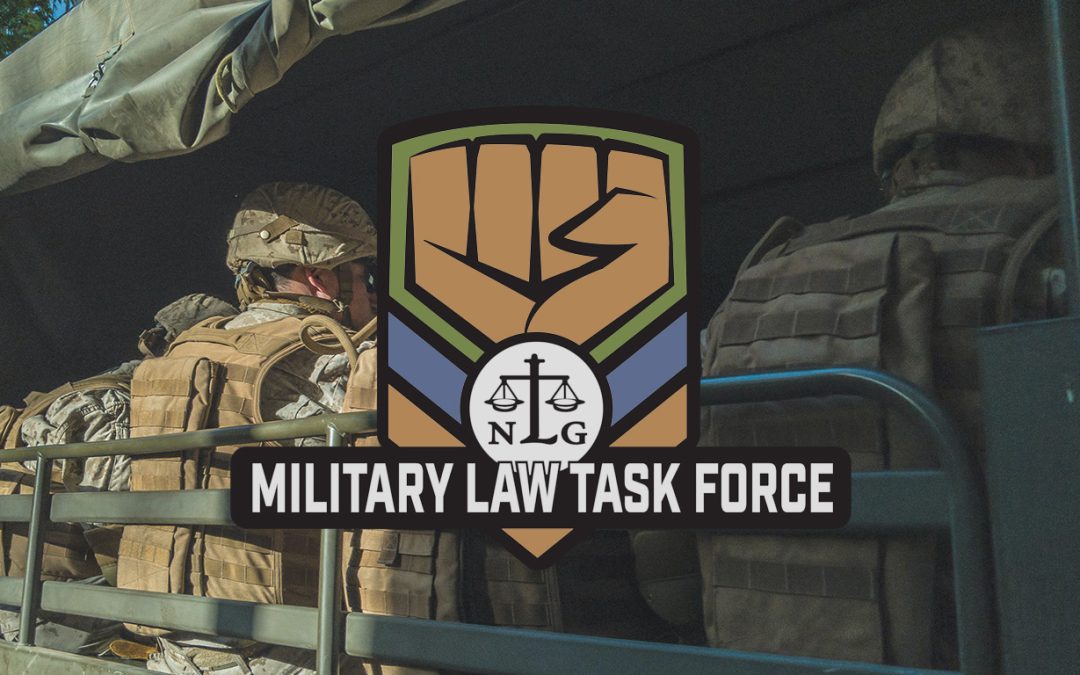BY KATHLEEN GILBERD
Recent memoranda from the Department of Defense have provided helpful guidance to the services’ review boards, raising the possibility of better outcomes for veterans with less than honorable discharges. Two of these, the Hagel and Kurta memos, were discussed in the Summer 2018 issue of On Watch <https://nlgmltf.org/on-watch/>. Between them, the memos offered “liberal consideration” to applicants affected by Post Traumatic Stress Disorder (PTSD) and other mental health conditions, by traumatic brain injury (TBI) and by sexual assault or sexual harassment.
A third policy memo, “Guidance to Military Discharge Review Boards and Boards for Correction of Military/Naval Records Regarding Equity, Injustice, or Clemency Determinations,” was published on July 25, 2018, by then-Under Secretary of Defense Robert Wilkie (hereafter the Wilkie memo). It provides broader help on issues of clemency or fairness.
The Wilkie cover memo emphasizes clemency, mentioning the country’s increasing attention to pardons for criminal convictions and “second chances” for those convicted of crimes. It notes the need for more guidance on clemency upgrades of court-martial discharges (bad conduct and dishonorable discharges as well as officer dismissals) as a matter of fundamental fairness. The attachment to the cover memo, however, extends this concept of clemency and fairness to less-thanhonorable administrative discharges (general and other than honorable discharges), framing its provisions as affecting relief based on equity (for Discharge Review Boards), justice (for Boards for Correction) and clemency (for both sets of boards in court-martial cases). Taken in conjunction with the Hagel and Kurta memos, it may provide for much greater relief for “bad paper” veterans. While it seems to emphasize upgrades of discharges, paragraph 4 of the attachment notes that in addition to court-martial discharge upgrades, “it also applies to any other corrections, including changes in a discharge, which may be warranted on equity or relief from injustice grounds.” This could include changes in the narrative reason for discharge, as from misconduct to secretarial plenary authority, and possibly justice changes from administrative or court-martial discharge to medical retirement. It remains to be seen how the boards will handle requests for changes other than upgrades.
The memo is framed in terms of guidance. The attachment specifically notes that each case should be examined on its own merits, and that the application of the memo’s principles is within the boards’ sound discretion. (Para. 5.)
Wilkie sets out twelve principles for consideration in clemency, equity or justice claims. Some of these restate or parallel existing standards or trends used by the boards. For example, evidence from outside a veteran’s service record may be considered in support of relief, as has long been the case. Military policy changes which would now be reasonably expected to allow a better outcome may be considered, long used as a “current standards” basis for an upgrade. And a veteran’s sworn statement or sworn testimony may be used to establish a fact; the boards have long accepted this in principle, though not often in practice.
But a number of the principles are new. “[C]haracter and rehabilitation should weigh more heavily than achievement alone,” so that outstanding academic or career achievement are not necessary to prove real rehabilitation. Along with this, “[i]t is consistent with military custom to honor sacrifices and achievements, to punish only to the extent necessary, to rehabilitate to the greatest extent possible, and to favor second chances in situations in which individuals have paid for their misdeeds.” (Para. 6.a.) While the boards have occasionally concluded that some veterans have paid a heavy price for less than honorable discharges, the idea of second chances is new and somewhat surprising,
The memo emphasizes that flawless service is not necessary to warrant an honorable discharge, a matter which the boards have often ignored. It notes that views of the relative severity of different acts of misconduct may change over time, thus changing the weight of misconduct when the boards consider mitigation. Marijuana use and its legality in some states is given as an example here. The memo also notes that relief is generally more appropriate for nonviolent offenses.
Para. 6.h clarifies consideration of mental health conditions, TBI and sexual assault or sexual harassment in equity/justice issues: “Requests for relief based in whole or in part on a mental health condition, including Post-Traumatic Stress Disorder (PTSD); Traumatic Brain Injury (TBI); or a sexual assault or sexual harassment experience, should be considered for relief on equitable, injustice, or clemency grounds whenever there is insufficient evidence to warrant relief for an error or impropriety.” (Error/impropriety refers to consideration of violations of military regulations or law, or Constitutional provisions, as opposed to matters of fairness.) In this writer’s experience, boards have tended to lean towards equity/justice considerations when they are unwilling to admit that, for example, commands have violated regulations, but para. 6.h gives this real emphasis.
In a change from prior practice, Wilkie suggests that the boards consider “uniformity and unfair disparities in punishments” as grounds for relief. In the past, the boards have generally held that individual cases warranted disparate punishment, so that unequal treatment of similar offenses was normally rejected as an argument for upgrades.
The final principle (Para. 6.l) notes that upgrades and changes in reason for discharge based on equity, justice, or clemency “normally” should not result in benefits such as separation pay, retroactive promotions, or payment of past medical expenses that would have been available had the revised character of or reason for discharge been given. There is no mention of medical pensions in cases where medically unfit members have been discharged for misconduct.
In addition to these principles, the memo sets out a number of factors to consider in equity, justice and clemency requests. These include candor; whether punishment, including collateral effects, was too harsh; aggravating and mitigating facts “related to the record or punishment;” positive or negative post-conviction conduct; severity of misconduct; length of time since discharge; “acceptance of responsibility, remorse or atonement;” the degree to which the relief is “necessary for the applicant;” his or her character and reputation; critical illness; old age; “meritorious service in government or other endeavors;” rehabilitation; the availability of other remedies; job history; youthful indiscretion as a cause of the misconduct; character references; letters of recommendation; whether an official with appropriate oversight opines that relief is warranted; and victim support for or opposition to relief.
Although some of these factors have been considerations in the past, they were not given significant emphasis in regulations governing discharge review, and many of them are new. They open significant areas for argument, and among other things suggest that documentation and issues regarding post-service rehabilitation, conduct, and problems such as illness or age, will deserve more attention than in the past.
Although the Wilkie memo presents guidance rather than binding requirements, it offers a good deal of hope for veterans, including those whose cases may already have been denied. As always, development of in-service and post-service evidence can play a critical role in these cases, and use of the specific types of evidence and assertions raised in the Wilkie memo may be of great help.
The Task Force hopes to monitor implementation of the Wilkie memo, as well as the Kurta and Hagel memos, and would appreciate thoughts and observations from readers handling discharge review cases. While the memos offer the boards an opportunity to improve veterans’ chances of upgrades and other changes in discharges, it may well be that encouragement or pressure from advocates will be important.



